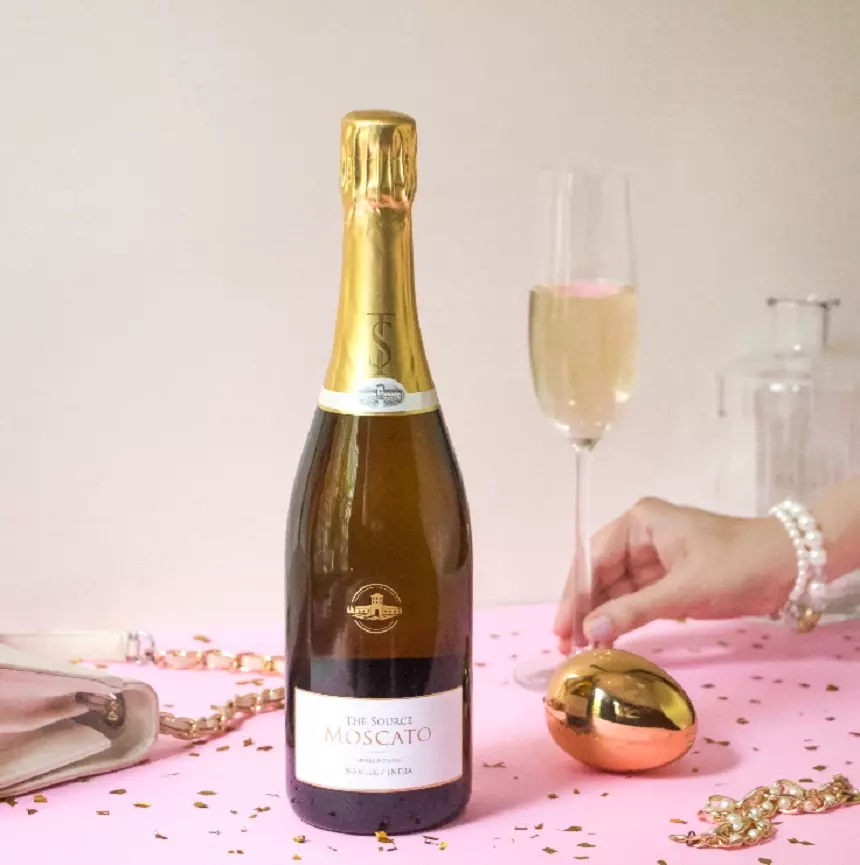What is a sparkling wine?
Sparkling wines are carbonated wines made from either white or red grapes. While white sparkling wines are the most common, sparkling rosé and, to a lesser extent, red sparkling wines are also available. Sparkling wines range in sweetness from dry to sweet and express a variety of flavours depending on the grape(s) used, the climate in which the grapes were grown, and the winemaking method used.
‘I am tasting the stars’; but how is it made?
The Méthode Champenoise is regarded as one of the best way to make sparkling wine. The phrase “champagne method” refers to wines produced in the Champagne region, whilst “traditional method” refers to wines produced elsewhere in the world using the same procedure. The secondary fermentation must take place inside the bottle for this procedure to work. The wine is then allowed to age on lees, which imparts a certain aroma, taste, and texture to the wine. This production phase results in aromas of brioche and nuts as well as a smooth and creamy mouthfeel. The time-consuming processes like riddling (which is occasionally done by hand) and disgorgement used in traditional method also reflect in the price of the wine.
The Charmat method, commonly referred to as the tank method, is comparatively quicker and less expensive approach to create sparkling wine. This procedure involves moving the wine from its first fermentation vat to a sizable sealed tank where it undergoes secondary fermentation, which produces carbon dioxide and is most well-known for its association with Prosecco. After that, the wine is bottled and delivered to stores. The sparkling wines produced with this method spend less time on lees and as such are lighter and more fruit-forward.
The transfer method is an additional procedure that combines elements of the traditional and tank procedures. In this method, the sparkling wine undergoes internal secondary fermentation, is kept on its lees, and is then transported to a tank where it is filtered. This keeps the lees’ ageing characteristics while omitting the pricey riddling and disgorgement processes.
The last and least expensive approach is carbonation. Carbon dioxide (CO2) is added to the wine, which is then pressure-bottled to give it its fizz rather than undergoing a secondary fermentation.
Brut, Extra Brut, Seco…what? The various levels of sweetness in Sparkling Wine-
There are four major levels of sweetness for sparkling wine, which are frequently indicated on bottle labels. They are as follows:
Extra-Brut: One of the driest type of sparkling wines is extra-brut. These wines lack much sweetness since most of the sugar has been metabolised by the yeast and very little amount of sugar is added in the dosage.
Brut: Brut sparkling wine is the maximum consumed variety. Although dry, these wines do have a faint sweetness to them. A great wine to try is our Sula Brut Tropicale - India’s first and only gold medal winning wine in the International Wine Challenge.
Extra-Dry: This style of sparkling wine is sweeter than Brut or Extra-Brut but is still dry. The most well-known sparkling wine made in the Extra Dry style is Prosecco.
Seco: This sparkling wine is sweet and has a notable sugar content. Give our Seco and Seco Rosé a try!
Doux: The sweetest sparkling wine of them all and great with dessert!
It’s a party! But, what do I serve with my Sparkling wine?
There is so much more to pairing than just "white wines with fish and red wines with meat," and there's no better way to veer from the norm than with a glass of sparkling wine in hand. With a little planning and knowledge of food and wine pairing, you may serve your favourite bubbly during dinner rather than before it, even though many of us like to drink sparkling wine as an appetizer to a festive meal or to toast a particular occasion. When it comes to pairing with food, sparkling wine clearly has an advantage over other types of wine. In addition to enhancing subtle flavours in food, sparkling wine's carbonation functions as a natural counterpoint to richer foods, seemingly cutting through the dish's fattier components. This is particularly helpful when the dishes are heavy on cheese or adorned with buttery or creamy sauces.
For pairings with Asian food, like Pad Thai, look for a rosé sparkling like our Sula Brut Tropicale and its equivalents. For spicy Chinese dishes and vindaloos (Indian) try our Sula Seco or Zinfandel Rose. The sweetness in the sparkling wine will balance off the heat in these dishes. The inherent contrast between richer meals and sparkling wine's carbonation makes the latter appear to cut through the dish's fattier components, which is especially helpful when the dish is loaded with cheese or garnished with buttery ingredients.

Seafood on the table brings out the best in sparkling wine. When the salty flavour of fresh seafood like oysters and prawns is combined with the bubbles of a sparkling wine, it is simply magical. The salinity of the seafood enhances the sparkling wine's effervescence and softens its acidity, drawing attention to its fruitier components.
Many sparkling wines go perfectly with dessert. Consider pairing light chocolate desserts with sweet sparkling red wines like the Sula Sparkling Shiraz and light creamy desserts with The Source Moscato- a delightful, fruity sweet sparkling wine.
Want to stay updated with the latest in the world of wines? Follow us on Instagram, Facebook, and LinkedIn today!





